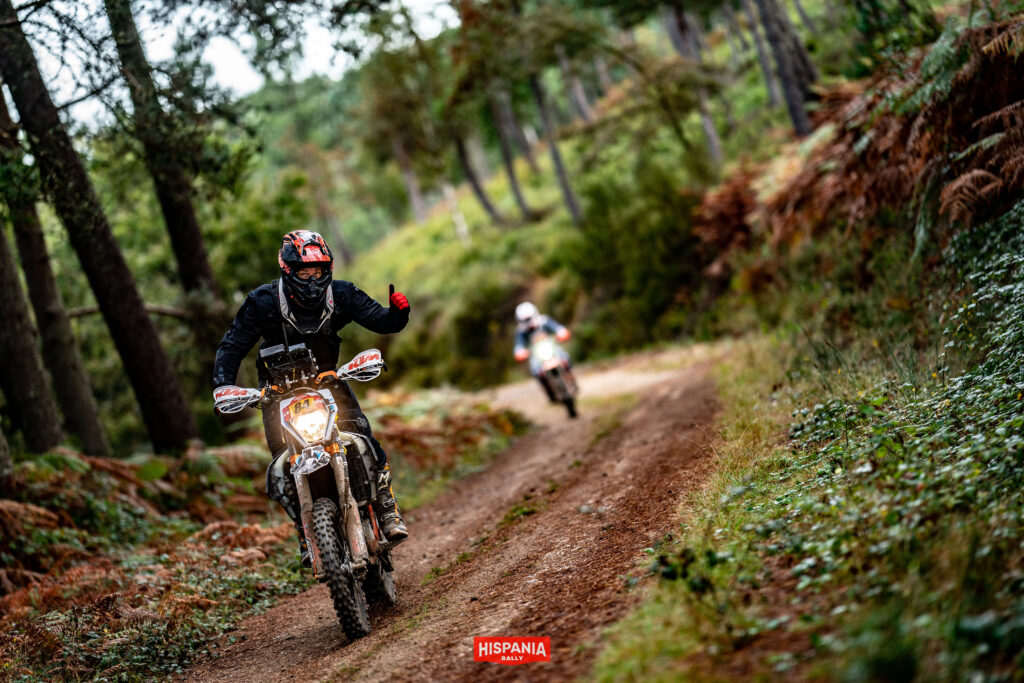Uncategorized
Hispania Rally 2021 Was a Bust…Now What?
This year’s Hispania Rally was supposed to be one of the last European rally races of the season: despite several postponements, the organizers of Hispania came back with their Wild Edition set to take place October 16-20 in Galicia, Spain.
But while Hispania Rally attracted a healthy number of participants in motorcycle, quad, and SSV categories and the event started as planned, things took a weird turn by Day One. After several incidents on the tracks, including a run-in with local police, Day Two of the rally never happened: the race was cancelled and, instead of lining up at the start line, competitors had to pack up and leave.
So what happened at Hispania Rally? Tamas Esch explains.
-Tamas, why did you choose Hispania Rally in the first place?
A few months back, I entered the Hellas Rally Raid but, due to a serious technical issue I had with my bike, I couldn’t continue and finish the race, so I was looking for a similar event to challenge myself. Hispania Rally seemed like a good choice according to the reviews it got for its previous editions.
I was really excited: the scenery was amazing in the mountains and forests of Northern Spain. The race started with a prologue stage which was an intense warm up on a wide, 3-kilometer long rally-cross track. The results of the prologue stage made the starting order for the first day.
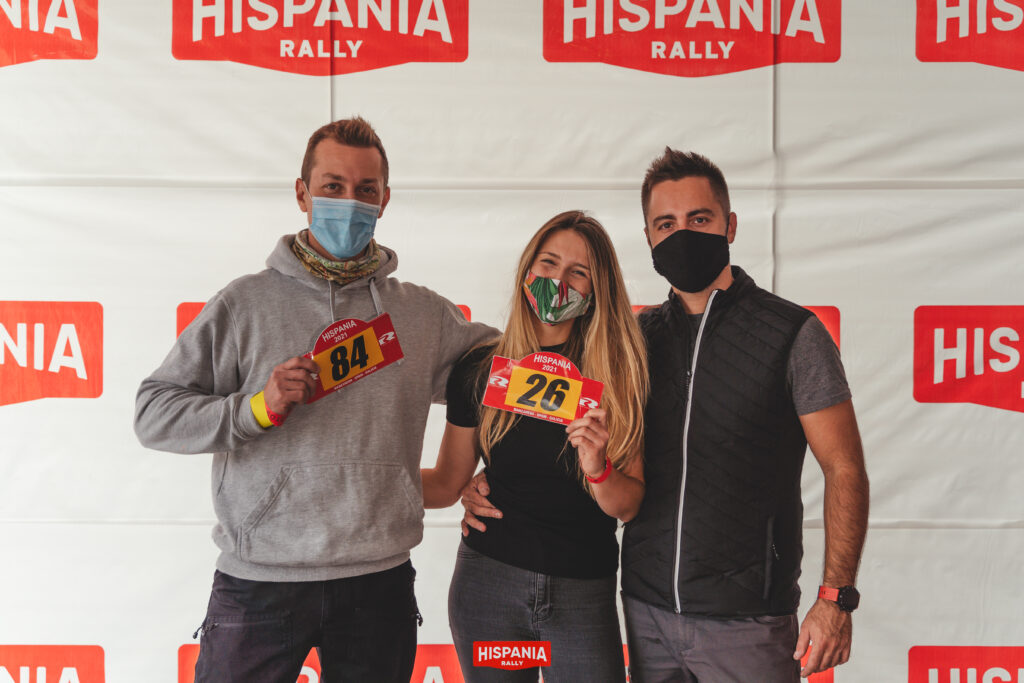
On Day 1, we started early in the morning; it was still dark, and before we reached the start of the first special stage, the weather turned so foggy that the organizers had to delay the first SS by half an hour in the hopes that the mist would clear. The mountain tracks skirted steep cliff edges and ravines, so racing blind would have been very dangerous. Unfortunately, the fog didn’t clear, so the first stage – around a hundred kilometers – was neutralized, which meant we had to ride the stage but we weren’t timed. In essence, it was like roadbook training.
By the time we arrived at the start line of second special stage, the weather was perfect – sunny and warm – and everybody switched their minds into racing mode. Another hundred kilometers of adrenaline-fueled fun began, and it looked good.
– What happened next?
At a point where I didn’t expect it, my Stella (the tracking system on the bike that warns you of other riders behind or ahead) started beeping. With twenty kilometers left to the finish of the special, it sent me an alert that another competitor was stopped and not moving some three hundred meters ahead. Rounding the next curve, I saw that all the competitors were there, and the police had blocked the road. They told us that the Hispania Rally ORGA didn’t have the permit to use the forest roads for racing.
A little later, we received news that an SSV had crashed into a civilian car inside the special stage (nobody got hurt, thankfully). The driver of the car didn’t know about the race and called the police immediately.
– What did the Hispania Rally organizers do?
At the evening briefing Domingo, the organizer of the race, told us we could continue the race and we didn’t have to worry about the police – if anybody got a ticket or a fine, he would take care of it. However, that was like throwing fuel into the fire…Everyone was getting seriously confused, concerned, and, frankly, angry – we wanted the organizers to get the necessary permits and ensure our safety on the special stages.
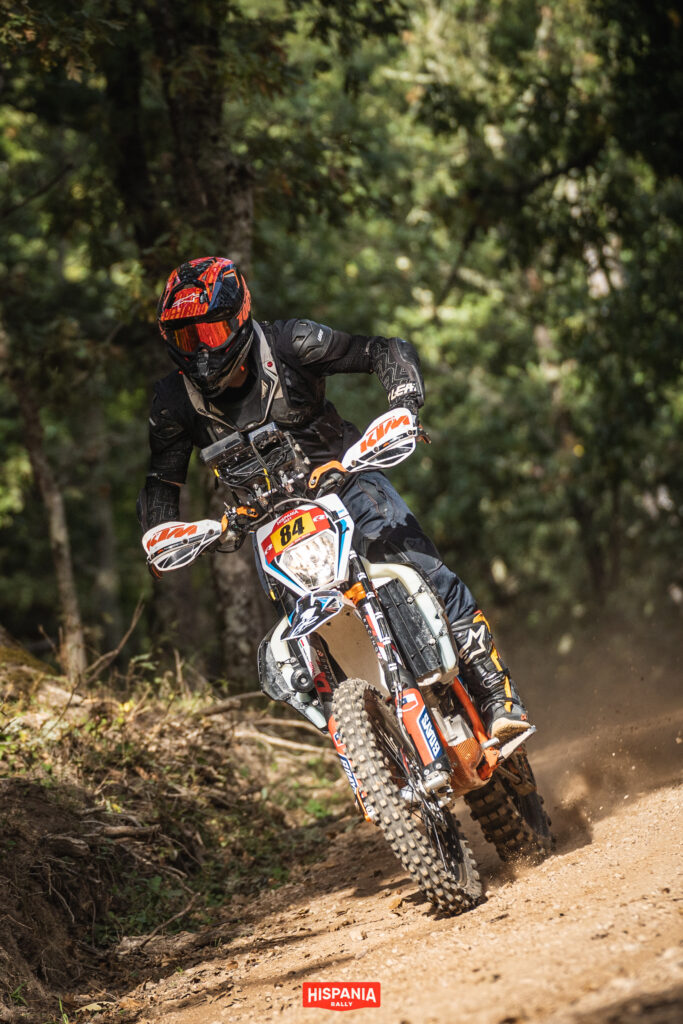
Later that night, we all received a message from the organizer saying the rally was canceled, and we would have another briefing the following afternoon.
At that point, we’d found out that the Hispania Rally ORGA’s application for the racing permit was denied four weeks prior to the race, and the FIM had refused its license, too. Then I realized that was the reason I hadn’t seen any FIM officials at the bivouac.
Clearly, the rally organizers did not get the necessary permits but decided to go ahead with the race anyway violating the law. I can’t see how this could be remedied.
During the final briefing, we were told the race was canceled, and we were promised to receive information regarding refunds and compensation via email in the next couple of days.
– Have you ever experienced something like this before?
I have never heard about something like this happening before. But it turns out that Hispania Rally has had a similar issue a few years ago in Andalucia when the race was going across a national park. Apparently that time, they were able to solve the issue.
However, whether we can use forest roads legally or not isn’t the biggest problem. It’s very important to be mindful of nature and preserve it, but in this particular situation, it’s the competitors’ safety that depends on the permits. During a rally race, you must put complete trust in the ORGA team that their roadbook is precise, all the dangerous obstacles and sections are well-marked, the rescue team and medics are within a close distance, and that the organizers do everything they can to keep the special stages closed from civilians as much as possible, working together with police and other authorities. Otherwise, no one is safe.
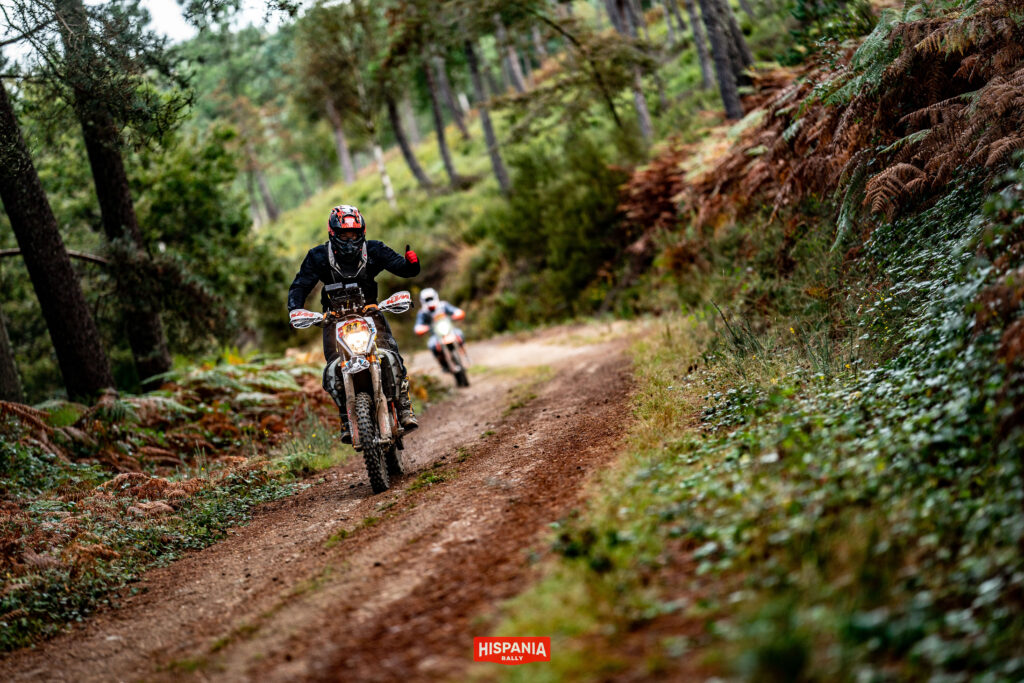
– If Hispania survives this, would you ever consider racing it again?
After what happened, I’ve lost all my trust in Domingo. He put our life at unpredictable risk, and from a financial aspect, I’m losing a considerable amount even if they give me a partial refund of the registration fee. Rally racing needs an investment of time and money, people had to take out holiday time, prepare and ship their vehicles, pay for mechanics, get insurance, travel there, and so on. It’s a major loss for a lot of riders.
Although the cancellation of Hispania Rally was a huge letdown, Tamas decided to stay optimistic and join a roadbook training event hosted by Joan Pedrero, a Spanish Dakar vet based near Zaragoza.
“For Hispania Rally, I was renting a KTM EXC-F 500 from Hernan Samaniego, owner of Nomadas Adventures. When we learned that the race was canceled, Hernan offered a plan B: we would pack everything up and head for Zaragoza for a three-day training event in the Aragon Desert. After packing up at the Hispania bivouac, we hit the road and reached Zaragoza at 2 am the following morning.
Joan Pedrero is a professional rally racer who started out in enduro and made his Dakar debut in 2009. Joan races the Dakar every year since, and in 2011 and 2013, he finished fifth – an impressive result. Dakar cred aside, Joan is an amazing coach and a quiet and humble person”, Tamas shares.
For three days, Tamas and several other Hispania riders joined Pedrero for some desert riding fun enjoying single track, fast curves, jumps, downhill and uphill climbs, deep gravel, and even fesh-fesh and a simulation of riding dunes.
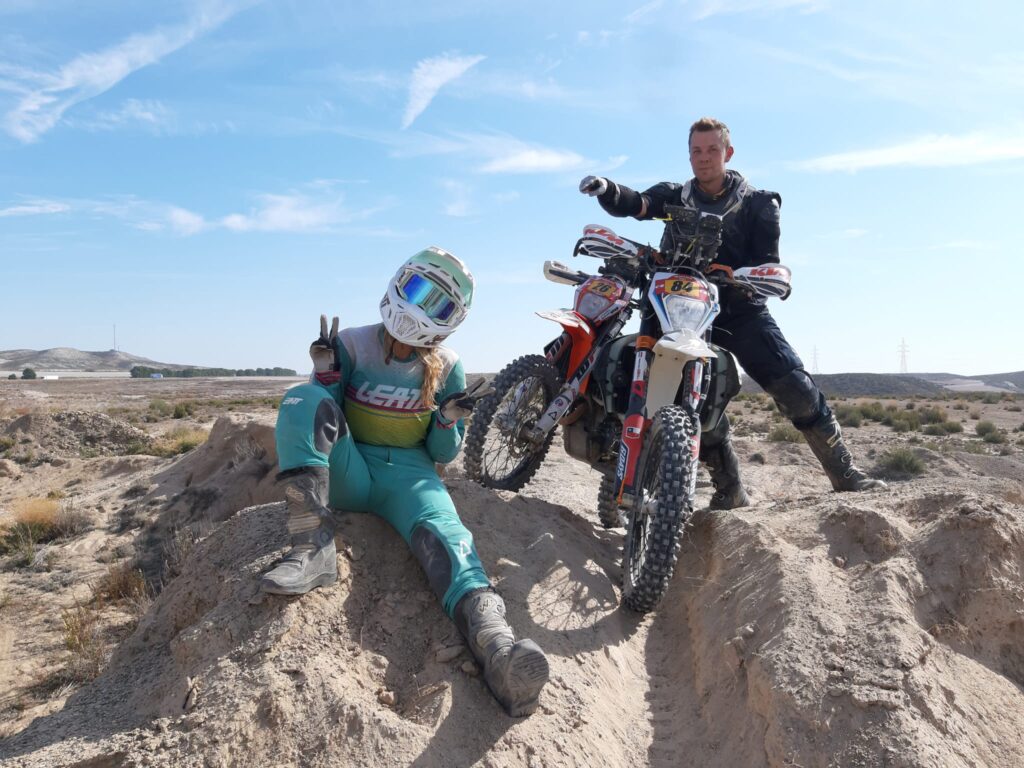
“Joan showed us how to tackle each challenge, then watched us practice and gave us tips on how to improve. In the evening, we had a roadbook classroom where he taught us about CAP headings and how to navigate while riding off-piste when there are no tracks to follow. We also learned about CAP MOYEN, where you’ve only got an average heading – for example, when you’re riding a twisty riverbed but still following the direction, or when there’s an obstacle you need to detour around and then return to original direction. These are common tasks on desert rallies.
Next, we had a 150-kilometer roadbook training: for the most part, the terrain wasn’t too technical, but the roadbook included more than 340 navigation tasks, which was sometimes very tricky, and we were all exhausted by the end of it. Finally, during the last day, we had a different roadbook that took us along dry riverbeds with big stones and other more technical sections. It was a 160-kilometer day, but this time, the navigation was easier, and the ever-changing environment in the Aragon desert looked incredible. We had a really great time riding there!”, Tamas says.
So there you have it: Hispania Rally was a bust, but instead of packing up and going home, Tamas and the crew seized the opportunity to hang with Joan Pedrero and learn about desert riding and navigation instead.
What would you have done?
Share in the comments below!

